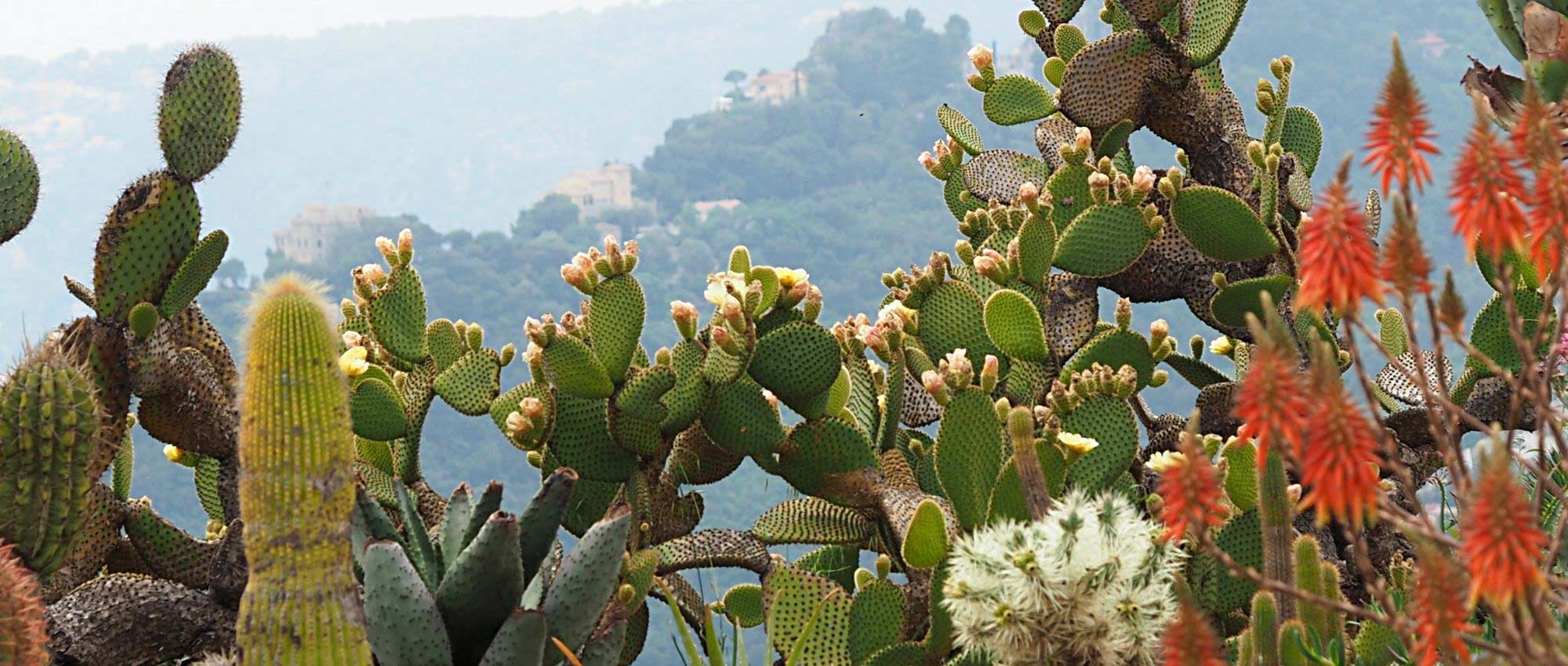
How to plant cacti in the garden?
Where, when and how to plant them? All our advice
Contents
Although they are generally grown in pots to protect them from cold, it is possible to plant cacti in the ground if hardy species are chosen or if one lives in an area with little risk of frost, such as the Mediterranean region or Breton coast, for example. Cacti easily find their place in seaside gardens. In regions with a cooler climate, choose cold-hardy varieties. Although less common, some cacti can indeed withstand down to -20 °C! They are perfect for quickly giving a very exotic, original effect to garden. We nevertheless advise sheltering them from rain in winter, as cacti particularly dislike winter damp. Apart from this precaution, they are plants quite easy to grow, doing very well in dry, poor soils and requiring little attention. Discover in this fact sheet all our tips for successfully planting your cacti in the ground and giving them the best conditions to thrive!
Where to plant cacti?
Choose a warm, sunny spot, for example against a south-facing wall. Ideally choose a raised or sloping site to allow better drainage: place them at the top of a bank rather than in a lower area of the garden, as moisture could stagnate there. Don’t hesitate to create a raised rockery to accommodate your cacti. Likewise, absolutely avoid heavy, clay soils that retain water, as well as soils rich in organic matter. Substrate should be light, sandy and well aerated, predominantly mineral, but in any case you can add draining elements (coarse sand, gravel…) when planting. We also recommend choosing a spot sheltered from cold winds.
Regarding pH, cacti prefer neutral or slightly acidic soils. Most do not tolerate calcareous soils.
A good solution is to place them somewhere sheltered from rain, for example under an overhanging roof, but ensure that location is not too shaded.
Discover our fact sheet Create a rockery: our tips for success
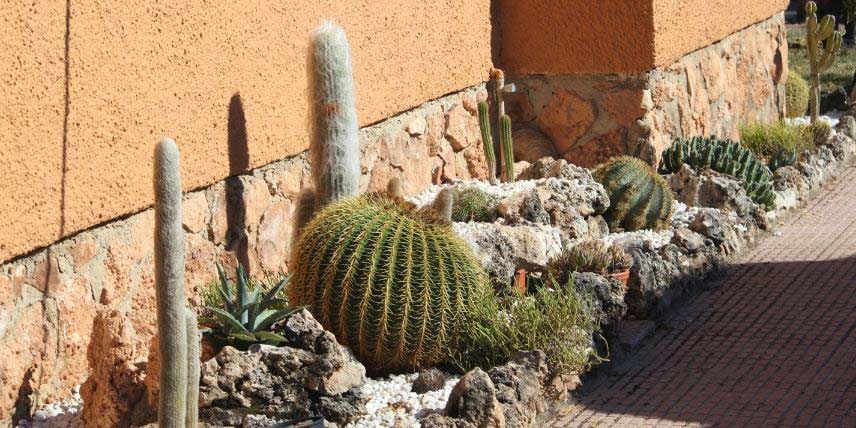
Choose a sunny spot for your cacti, for example against a south-facing wall!
Read also
7 iconic cacti and succulent plantsWhen to plant cacti?
Plant your cacti in spring, from mid‑May or in June, once frosts are no longer a risk. This will give them time to become well established and develop their root system before having to face winter.
Discover other Cacti and succulents
View all →Available in 0 sizes
Available in 1 sizes
Available in 1 sizes
Available in 1 sizes
Available in 1 sizes
Available in 1 sizes
Available in 1 sizes
Available in 1 sizes
Available in 1 sizes
Available in 1 sizes
How to plant them?
If your cacti were originally kept in shade or indoors, we recommend acclimatising them gradually, so as not to expose them straight away to direct sunlight. Start by taking them outside for a few hours during the day, then leave them outdoors with shading during the hottest hours before planting them permanently in sun.
We also recommend, before planting, to weed the area thoroughly. Because of their thorns, it is better to avoid later weedings and limit interventions near cacti. In addition, if herbs grow around cacti, they will help create a more humid atmosphere around them and increase risk of rot.
- Dig a planting hole, two to three times size of rootball.
- Add draining elements, such as coarse sand or gravel, which you will mix with well-decomposed compost and garden soil. Substrate should contain at least one third draining elements, to allow roots to breathe and water to drain rapidly into soil.
- Carefully remove your cactus from its pot and plant it. Do not hesitate to use several layers of newspaper, or thick gloves, so you can handle it without injuring yourself.
- Replace substrate all around to keep it upright, but without burying the collar.
- Do not water your cactus after planting! Indeed, roots may have been damaged during the operation, and moisture could make them rot. Wait at least two weeks, until healed, before watering.
- Optionally apply mineral mulch.
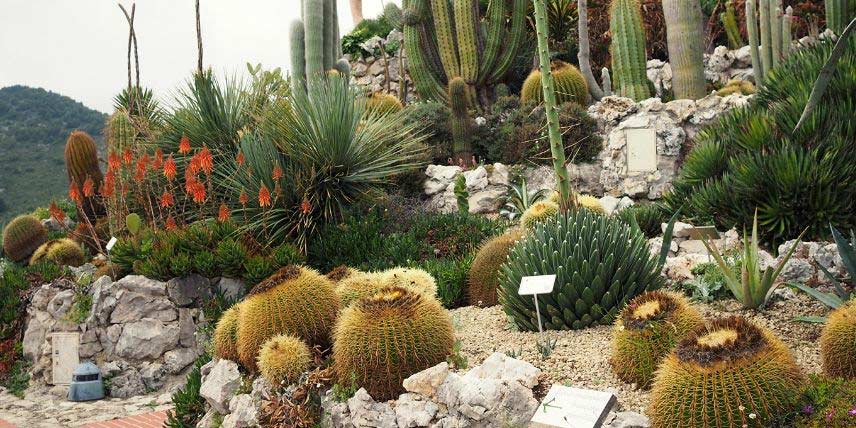
Feel free to create a rockery to display your cacti! Here, a rockery at the exotic garden of Eze, with Echinocactus, Agaves, Aloes…
Read also
How to water a cactus?How to mulch them?
We recommend choosing a mineral mulch: gravel, pumice, schist, slate… which you should lay around cacti to a thickness of 5 to 10 cm. As well as limiting weed growth, mineral mulch stores heat during the day and releases it afterwards. In addition, it will insulate the collar of cacti from moisture, reducing risk of rotting. Conversely, organic mulches (straw, hemp, ramial chipped wood…) retain moisture, which is obviously unsuitable for cacti!
And then...? How do you care for them?
During first year, water once or twice a month, especially in spring and summer. Thereafter, cacti will no longer need watering. Read our advice sheet on watering cacti. You can also apply a low-nitrogen fertiliser in spring.
If you have watered your cacti in spring and summer, it is important to stop watering in autumn, as cacti need to dry out to survive winter. Cacti have swollen stems to help them resist long periods of drought, but in winter they cope better with cold if they contain less water in their tissues. Moisture makes them more susceptible to frost and to fungal diseases.
As winter approaches, we recommend installing a removable cover (tarpaulin, plastic sheet…) above your cacti to protect them from moisture. Preferably it should be transparent to let light through. You can also cover cacti with horticultural fleece, but remove it occasionally as temperatures rise to allow airing and to prevent cacti from rotting.
Careful weeding before planting, followed by applying mulch, will reduce weed growth and lower maintenance. Indeed, cactus thorns make weeding and bed maintenance more difficult, so it’s best to limit such interventions.
Don’t hesitate to combine your cacti with other succulents, such as agaves, aloes or sedums, as well as yuccas, palms, euphorbias, phormium, cordyline, eucomis… These plants will easily create an exotic, getaway feel in your garden! For flowering, we recommend favouring warm tones, for example kniphofias, crocosmias or eremurus. For a very Mediterranean look, you can also play with silvery–bluish foliage tones: santolina, eryngium, dusty miller, Agave americana, helichrysum, Stachys byzantina…
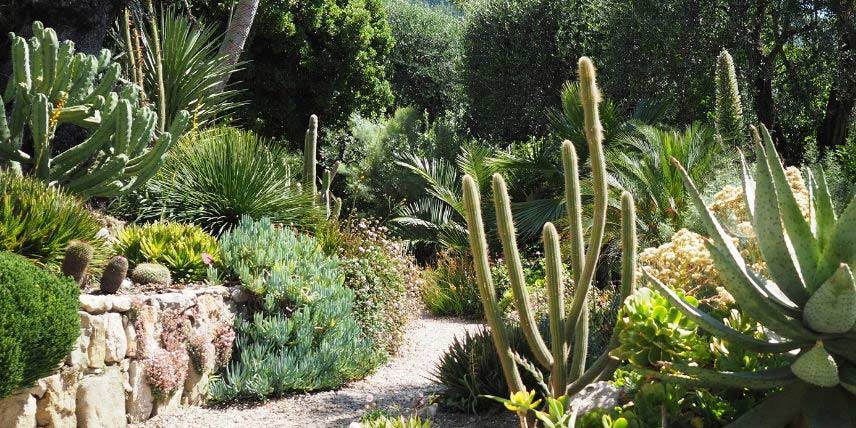
You can create beautiful scenes by pairing your cacti with succulents and other drought-tolerant plants. (photo taken at the Botanical Garden of Val Rameh, Menton)
Finally, for everything about cacti and succulents suitable for outdoor cultivation, see our full advice sheet: Outdoor cacti and succulents.
- Subscribe!
- Contents
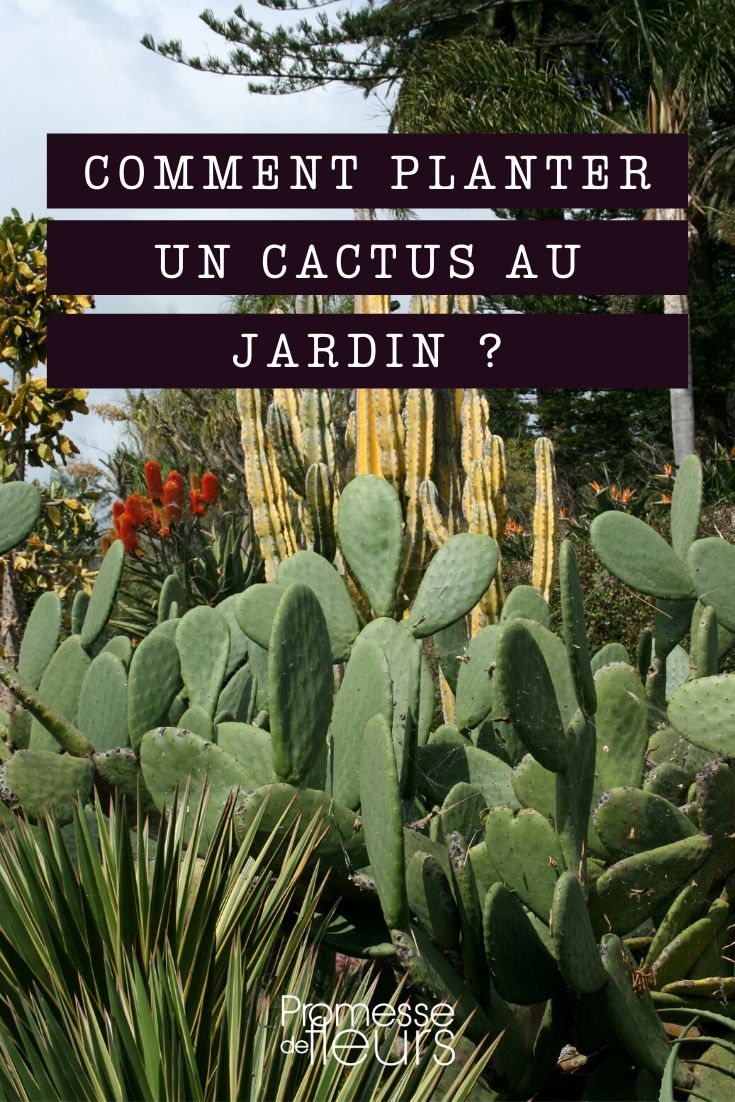































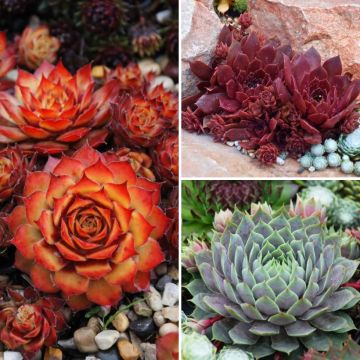
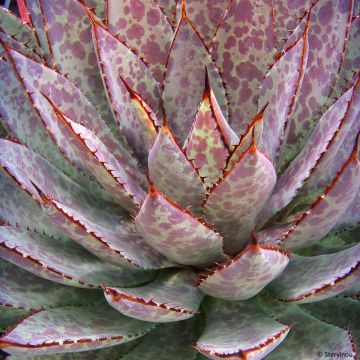
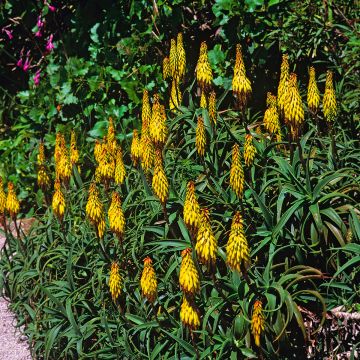
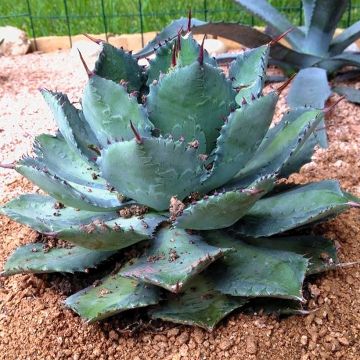
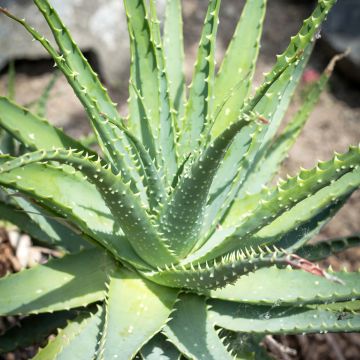
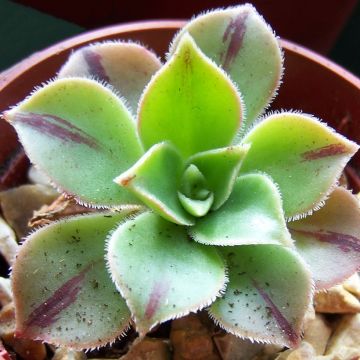
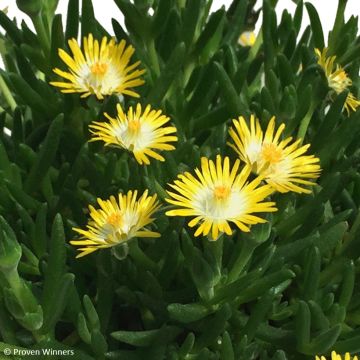
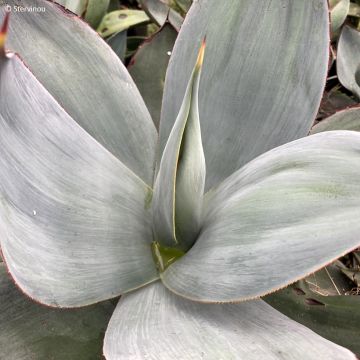
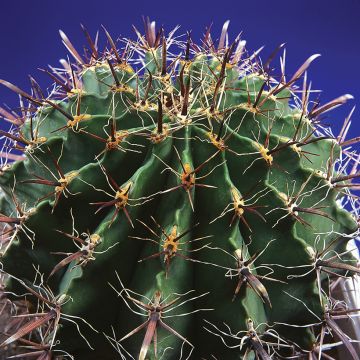
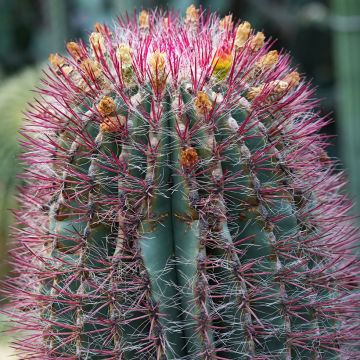
Comments